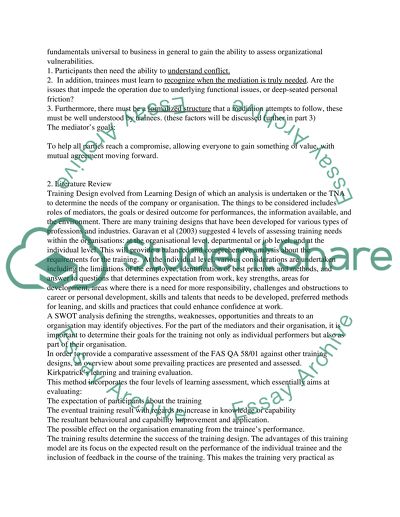Cite this document
(“Training for mediators. Training Programme: Design, Delivery and Essay”, n.d.)
Retrieved from https://studentshare.org/education/1394542-training-for-mediators-training-programme-design-delivery-and-evaluation
Retrieved from https://studentshare.org/education/1394542-training-for-mediators-training-programme-design-delivery-and-evaluation
(Training for Mediators. Training Programme: Design, Delivery and Essay)
https://studentshare.org/education/1394542-training-for-mediators-training-programme-design-delivery-and-evaluation.
https://studentshare.org/education/1394542-training-for-mediators-training-programme-design-delivery-and-evaluation.
“Training for Mediators. Training Programme: Design, Delivery and Essay”, n.d. https://studentshare.org/education/1394542-training-for-mediators-training-programme-design-delivery-and-evaluation.


